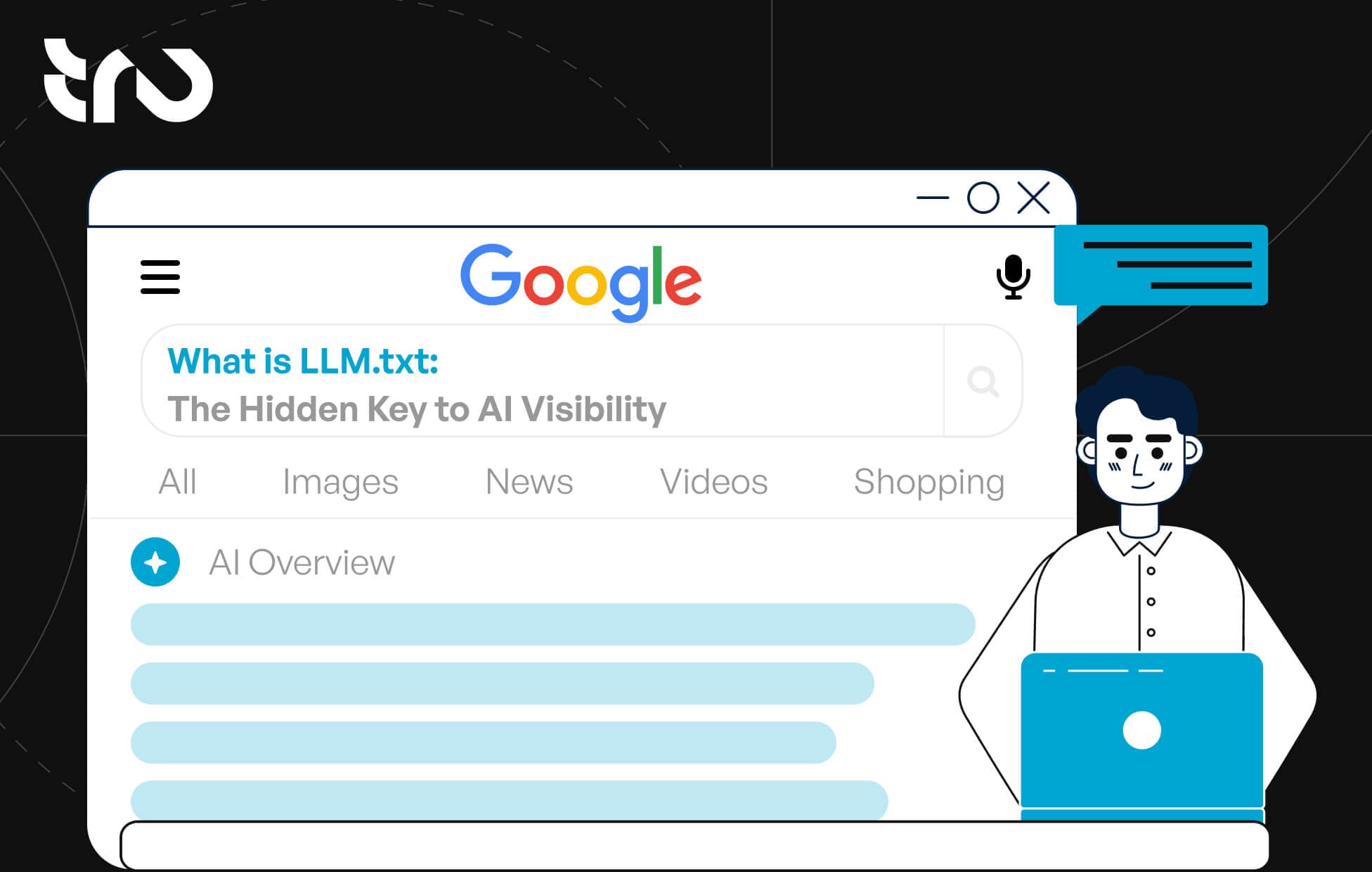When search engines first arrived, websites rushed to learn how robots.txt could guide crawlers. Fast forward to 2025, and we are at a similar turning point with AI in search.
AI systems now read, summarize, and cite content, deciding which pages and brands gain visibility beyond traditional search results. Adding an LLM.txt file helps ensure your website is noticed and cited correctly by AI.
This blog explains what is LLMs.txt, why it’s important, and how to use LLMs.txt to position your content in AI overviews before it’s expected everywhere.
Why LLMs.txt Has the SEO World Buzzing
The chatter around LLM.txt is growing for a reason. Major AI systems, including Google’s AI-generated overviews, increasingly rely on structured guidance from websites. With a clear LLM.txt, content is more likely to be recognized, credited, and featured in AI responses.
This is happening in practice. Websites with well-configured LLM.txt files are appearing in AI summaries and recommendations more consistently. For anyone serious about digital presence, understanding LLM.txt is now critical.
LLM.txt Explained: What It Really Does
LLM.txt is a simple text file that websites can use to give instructions, signals, or context directly to large language models (LLMs) like ChatGPT, Gemini, or Claude. LLM.txt guides a single AI model, while LLMs.txt ensures your content is credited across multiple AI systems.
Think of it as the AI era version of robots.txt. Instead of telling search engines what to crawl, it communicates website content directly to AI.
Key Benefits of LLM.txt
AI Overview SEO: LLM.txt helps Google and other AI systems identify which pages to include in AI-generated overviews and summaries.
Guiding AI for SEO: Beyond standard automation tools, AI now reads content like a human editor. LLM.txt signals which content matters most.
Content Control: Not every page should appear in AI summaries. LLM.txt provides control over what AI references and what it ignores.
Brand Attribution: When AI cites or summarizes content, LLM.txt sets expectations for proper attribution, ensuring the brand gets recognized.
Related Insight > Enterprise SEO: Strategies & Tips for Large-Scale Businesses
The Shift from Search to AI with LLM.txt
Thinking about the future, one key question is how AI overview will change the SEO landscape. Traditional SEO aimed at ranking on the first search page to earn traffic and clicks. Now, visibility extends to AI-driven experiences. When users ask AI assistants for answers, website content may be cited without ever appearing in a search result.
LLM.txt acts as a bridge and connects content to AI systems, ensuring the site is considered when AI answers and replies are generated. This shift emphasizes not just visibility, but accuracy, authority, and control over how a brand appears in AI outputs.
Urgency of Adopting LLM.txt
The window to act is narrow. AI adoption is growing, and early adopters gain a distinct advantage. Without an LLM.txt file, website content risks being overlooked in AI-driven responses. Businesses that implement it now can maintain control over brand citations, content inclusion, and how AI interprets their site.
Every day without LLM.txt increases the chance of missed opportunities in AI visibility. Acting today positions content for consistent recognition in AI systems that increasingly influence decision-making.
Start Controlling AI Citations with Tru Today.
Contact UsStep-by-Step LLM.txt Implementation for Websites
Implementing LLM.txt does not require deep technical expertise, but it does require careful planning:
Audit Your Website Content: Identify pages that should be included in AI summaries and those to exclude.
Create or Update LLM.txt: Follow the syntax guidelines to define rules for AI systems clearly.
Test AI Responses: Check how AI systems read and summarize your content, making adjustments to LLM.txt as needed.
Maintain Regular Updates: As content changes, so should your LLM.txt file. Consistency is key to remaining visible in AI outputs.
These steps make the content both AI-friendly and reliable to cite, establishing the site as a trusted authority.
The Hidden Key to AI Visibility
LLM.txt may be small, but its influence on AI SEO is substantial. Implementing it effectively positions a website at the forefront of the evolving digital landscape.
As AI systems increasingly determine how content is discovered and cited, a structured approach with LLM.txt ensures a brand maintains authority and relevance. More than just an SEO tool, it guides how AI interprets and interacts with content.
Trying to stand out digitally? Trust Tru’s Digital Marketing Services to amplify your brand presence.
Frequently Asked Questions about LLM.txt
LLM.txt is a site-level text file that signals to AI systems which pages should be read, cited, or ignored. For SEO, it helps your content be chosen and attributed correctly in AI-generated answers and overviews.
Create a plain text file named LLM.txt at your site root and list inclusion, exclusion, and attribution rules in the documented syntax. Start with a content inventory, add clear rules for core pages, then test AI summaries and adjust as needed.
Robots.txt guides crawlers about indexing; LLM.txt guides AI systems about inclusion and citation. Use robots.txt to control crawlers and LLM.txt to control how AI reads and credits your content.
Yes. AI platforms are increasingly using site-level signals to decide what to include in summaries, and LLM.txt is designed to provide those signals. Implementing LLM.txt improves the chance that your content is read and cited correctly by modern AI-driven features.
Prioritize core knowledge pages, set explicit attribution rules, and schedule regular reviews tied to content updates. Combine LLM.txt with structured data and monitoring so AI outputs reference your brand consistently.



